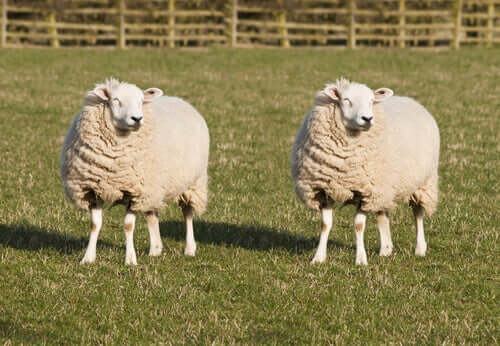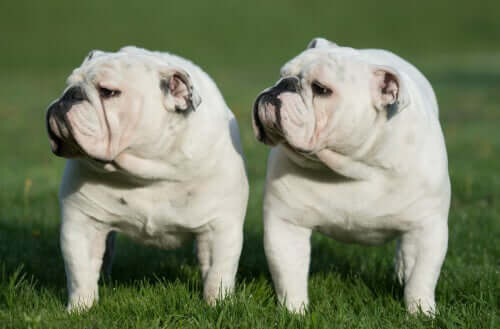The Legality of Transgenic Animals


Written and verified by the lawyer Francisco María García
All animals created through transgenesis, more commonly known as cloning, are called “transgenic animals.” In other words, they’re genetically modified animals.
What is transgenesis?
You’ve probably never heard that word before, because we mostly refer to it as cloning. The basic process involves transferring the genetic information of one organism to another.
But scientists generally don’t transfer the entire genetic code from one organism to another during cloning. Before they do the transfer, they need to pick out, remove, and isolate certain genes.
So, when we talk about transgenic animals, we’re talking about transferring part of one animal’s DNA to another. There are several potential reasons for it, including, but not limited to, reproduction.
Can you clone any animal?
In theory, we could use the genetic material (whether DNA or RNA) of any animal for transgenesis. That means that it’s also theoretically possible to clone any animal of any species. Of course, that would include human beings.
There are several species that have already undergone genetic modification in labs. For example, insects, parasites, fish, birds, reptiles, and, of course, mammals like the famous sheep, Dolly. She became the most famous of all transgenic animals in 1996.

Still, the vast majority of transgenic procedures have been carried out with rats. That “preference” is mostly due to the fact that they’re small and easy to handle. They’re also cheap to maintain, and are very adaptable to life in captivity.
The fact that rats have a similar genetic structure to humans has also been a major reason for their widespread cloning.
The legality of transgenic animals: the human question
The cloning of Dolly the sheep and the negative consequences that came with it caused many countries to rethink their laws about the limits of genetic modification. It was that, and the possibility of genetically modifying human beings, that became the center of the debate.
In 1997, one year after Dolly’s cloning, UNESCO published the Universal Declaration on the Human Genome and Human Rights. In it, they clearly express their disapproval of transgenesis for human reproduction.
A year after that, in 1998, the European Council approved the first international regulations prohibiting the cloning of human beings. 19 other countries ratified the regulations the very same day. To this day, human cloning is banned in most countries in the European Union and the rest of the world.
Transgenesis and animal welfare
The EU does allow animal cloning, but there are specific limits and regulations established by the European Parliament, and each individual country.

For example, in Spain, there are four regulations surrounding animal cloning. They all have to do with the limits of the genetic modification of animals.
- It forbids the use of animals in procedures and research that would cause mental or physical pain.
- It says that any animals used for experimentation, commercial research, and transport, must receive proper treatment and basic care, even when it comes to slaughtering.
- A priority is the protection and welfare of animals used for experiments, teaching, and scientific research.
- Anyone who works with animals in this way has to prove that they are properly certified to do that work.
Transgenic animals for human consumption
One of the biggest legal controversies right now is the question of whether we should use transgenic animals for their meat and other products. In 2015, the European Parliament approved a law that would forbid the cloning of farm animals.
Part of their concern was over the potentially unethical nature of modifying the genes of these species. But if we’re honest, the real reason they approved it so quickly was over the concerns about the negative consequences that products from transgenic animals could have on human health.
Meanwhile, the United States approved the sale of products derived from genetically modified salmon in that exact same year. That makes them the first transgenic animals created for human consumption.
Also in 2015, China announced that it had successfully modified cows to be more resistant to tuberculosis.
Since then, the view has been that Europe has a “conservative” position in terms of cloning. But the people seem to agree with their governments that we should ban that kind of cloning. What do you think?
All animals created through transgenesis, more commonly known as cloning, are called “transgenic animals.” In other words, they’re genetically modified animals.
What is transgenesis?
You’ve probably never heard that word before, because we mostly refer to it as cloning. The basic process involves transferring the genetic information of one organism to another.
But scientists generally don’t transfer the entire genetic code from one organism to another during cloning. Before they do the transfer, they need to pick out, remove, and isolate certain genes.
So, when we talk about transgenic animals, we’re talking about transferring part of one animal’s DNA to another. There are several potential reasons for it, including, but not limited to, reproduction.
Can you clone any animal?
In theory, we could use the genetic material (whether DNA or RNA) of any animal for transgenesis. That means that it’s also theoretically possible to clone any animal of any species. Of course, that would include human beings.
There are several species that have already undergone genetic modification in labs. For example, insects, parasites, fish, birds, reptiles, and, of course, mammals like the famous sheep, Dolly. She became the most famous of all transgenic animals in 1996.

Still, the vast majority of transgenic procedures have been carried out with rats. That “preference” is mostly due to the fact that they’re small and easy to handle. They’re also cheap to maintain, and are very adaptable to life in captivity.
The fact that rats have a similar genetic structure to humans has also been a major reason for their widespread cloning.
The legality of transgenic animals: the human question
The cloning of Dolly the sheep and the negative consequences that came with it caused many countries to rethink their laws about the limits of genetic modification. It was that, and the possibility of genetically modifying human beings, that became the center of the debate.
In 1997, one year after Dolly’s cloning, UNESCO published the Universal Declaration on the Human Genome and Human Rights. In it, they clearly express their disapproval of transgenesis for human reproduction.
A year after that, in 1998, the European Council approved the first international regulations prohibiting the cloning of human beings. 19 other countries ratified the regulations the very same day. To this day, human cloning is banned in most countries in the European Union and the rest of the world.
Transgenesis and animal welfare
The EU does allow animal cloning, but there are specific limits and regulations established by the European Parliament, and each individual country.

For example, in Spain, there are four regulations surrounding animal cloning. They all have to do with the limits of the genetic modification of animals.
- It forbids the use of animals in procedures and research that would cause mental or physical pain.
- It says that any animals used for experimentation, commercial research, and transport, must receive proper treatment and basic care, even when it comes to slaughtering.
- A priority is the protection and welfare of animals used for experiments, teaching, and scientific research.
- Anyone who works with animals in this way has to prove that they are properly certified to do that work.
Transgenic animals for human consumption
One of the biggest legal controversies right now is the question of whether we should use transgenic animals for their meat and other products. In 2015, the European Parliament approved a law that would forbid the cloning of farm animals.
Part of their concern was over the potentially unethical nature of modifying the genes of these species. But if we’re honest, the real reason they approved it so quickly was over the concerns about the negative consequences that products from transgenic animals could have on human health.
Meanwhile, the United States approved the sale of products derived from genetically modified salmon in that exact same year. That makes them the first transgenic animals created for human consumption.
Also in 2015, China announced that it had successfully modified cows to be more resistant to tuberculosis.
Since then, the view has been that Europe has a “conservative” position in terms of cloning. But the people seem to agree with their governments that we should ban that kind of cloning. What do you think?
All cited sources were thoroughly reviewed by our team to ensure their quality, reliability, currency, and validity. The bibliography of this article was considered reliable and of academic or scientific accuracy.
- Declaración Universal sobre el Genoma y los Derechos Humanos. Unesco. 1997. Extraído de: http://portal.unesco.org/en/ev.php-URL_ID=13177&URL_DO=DO_TOPIC&URL_SECTION=201.html
- Ley 8/2003, de 24 de abril, de sanidad animal.2003. Extraído de: https://www.boe.es/buscar/act.php?id=BOE-A-2003-8510
This text is provided for informational purposes only and does not replace consultation with a professional. If in doubt, consult your specialist.








